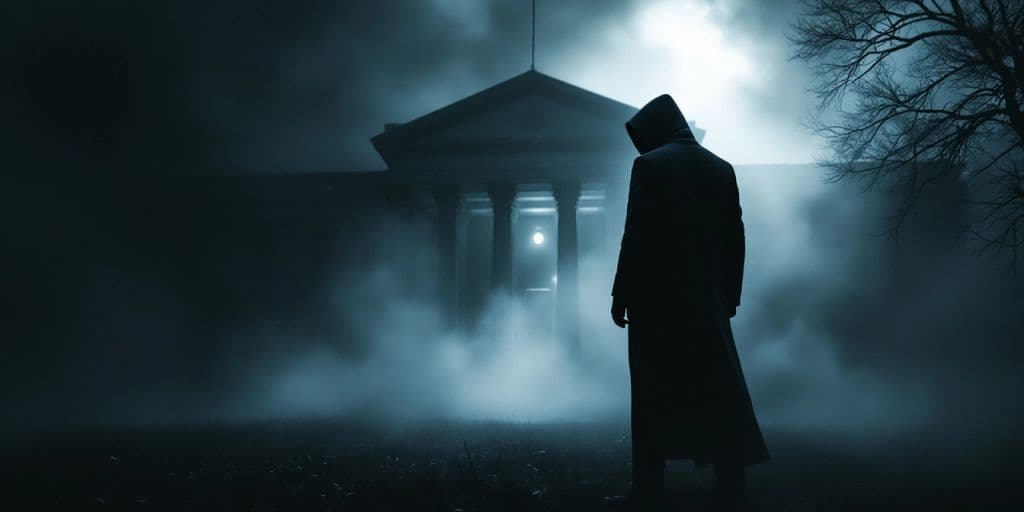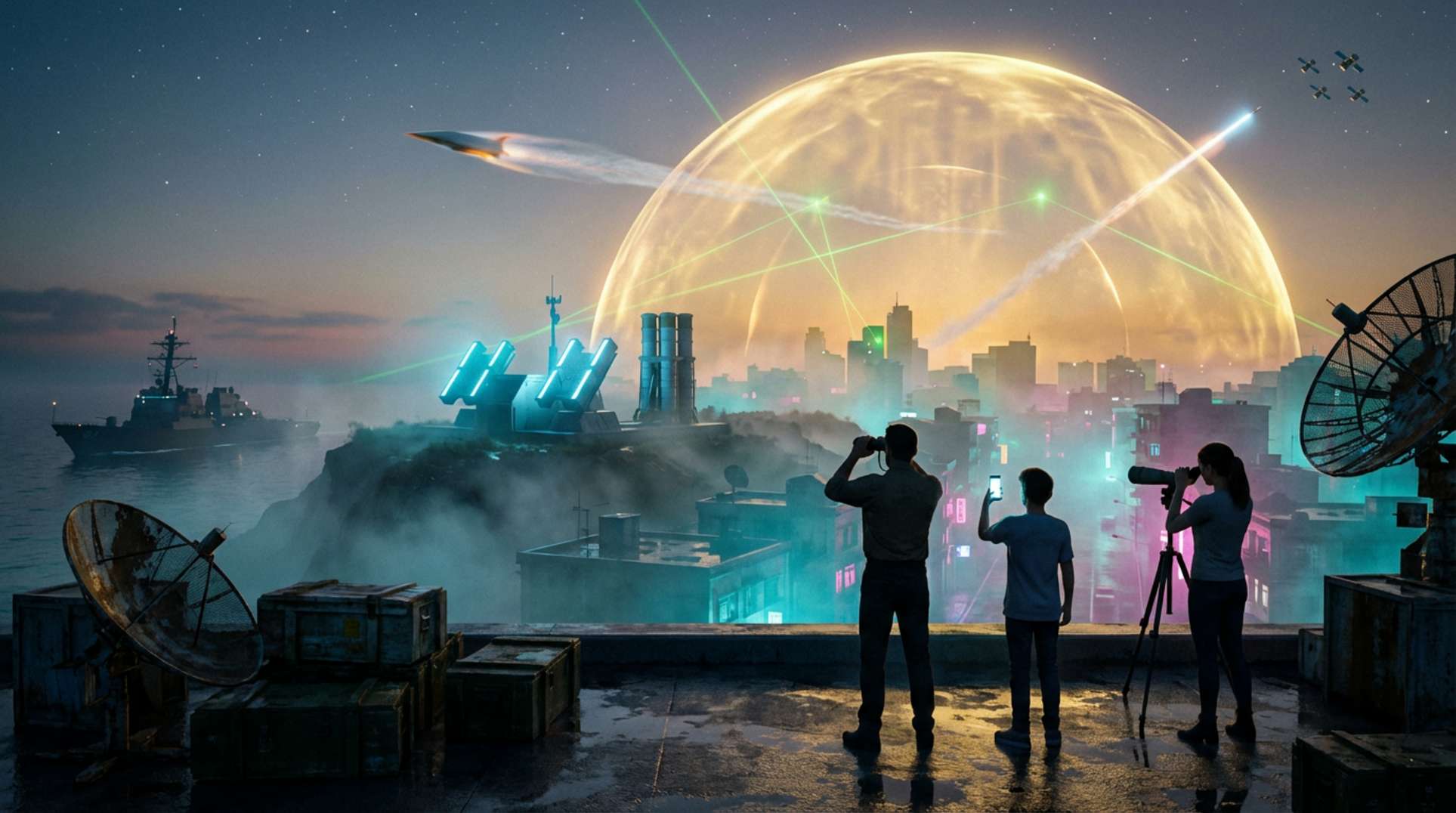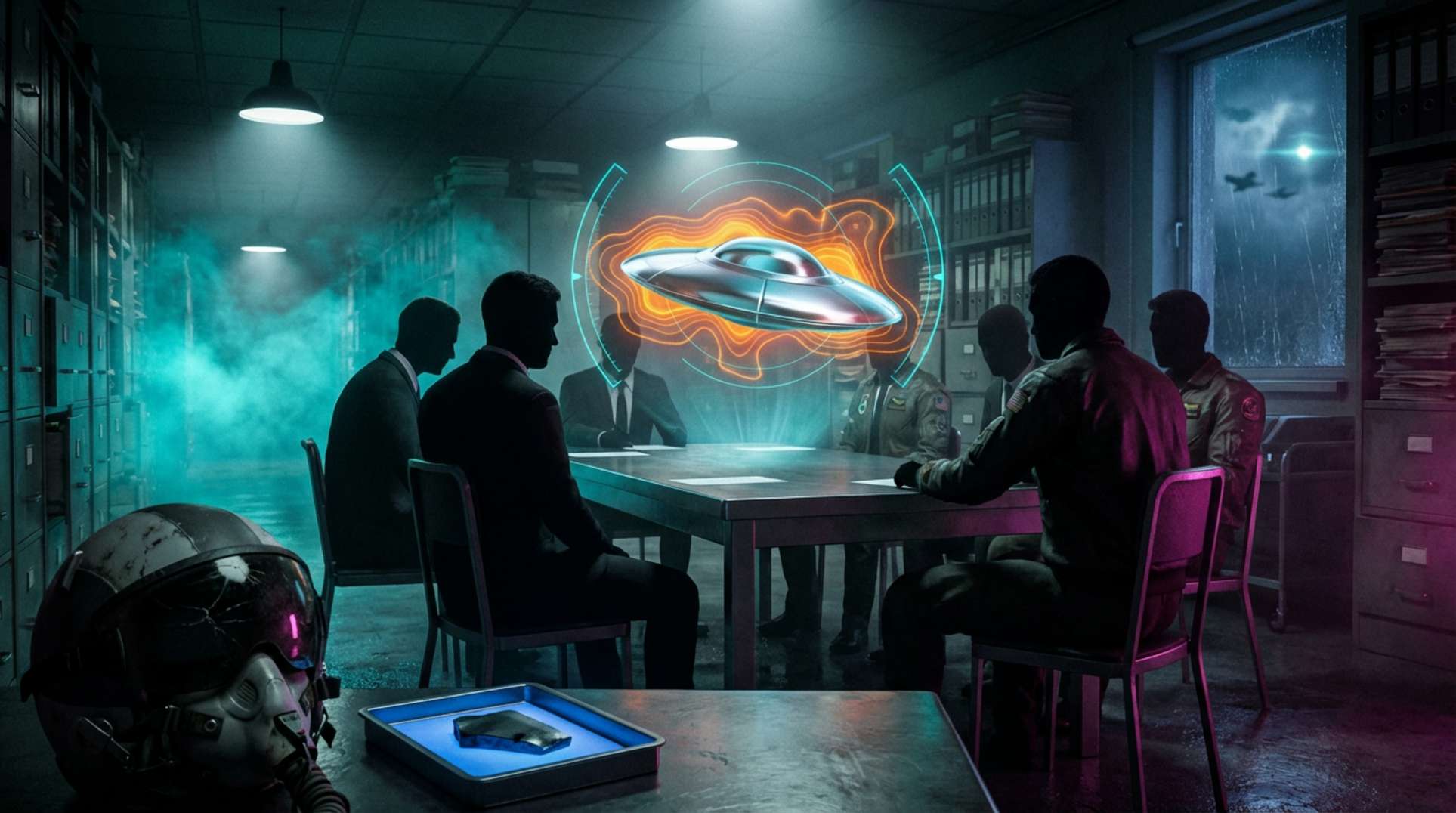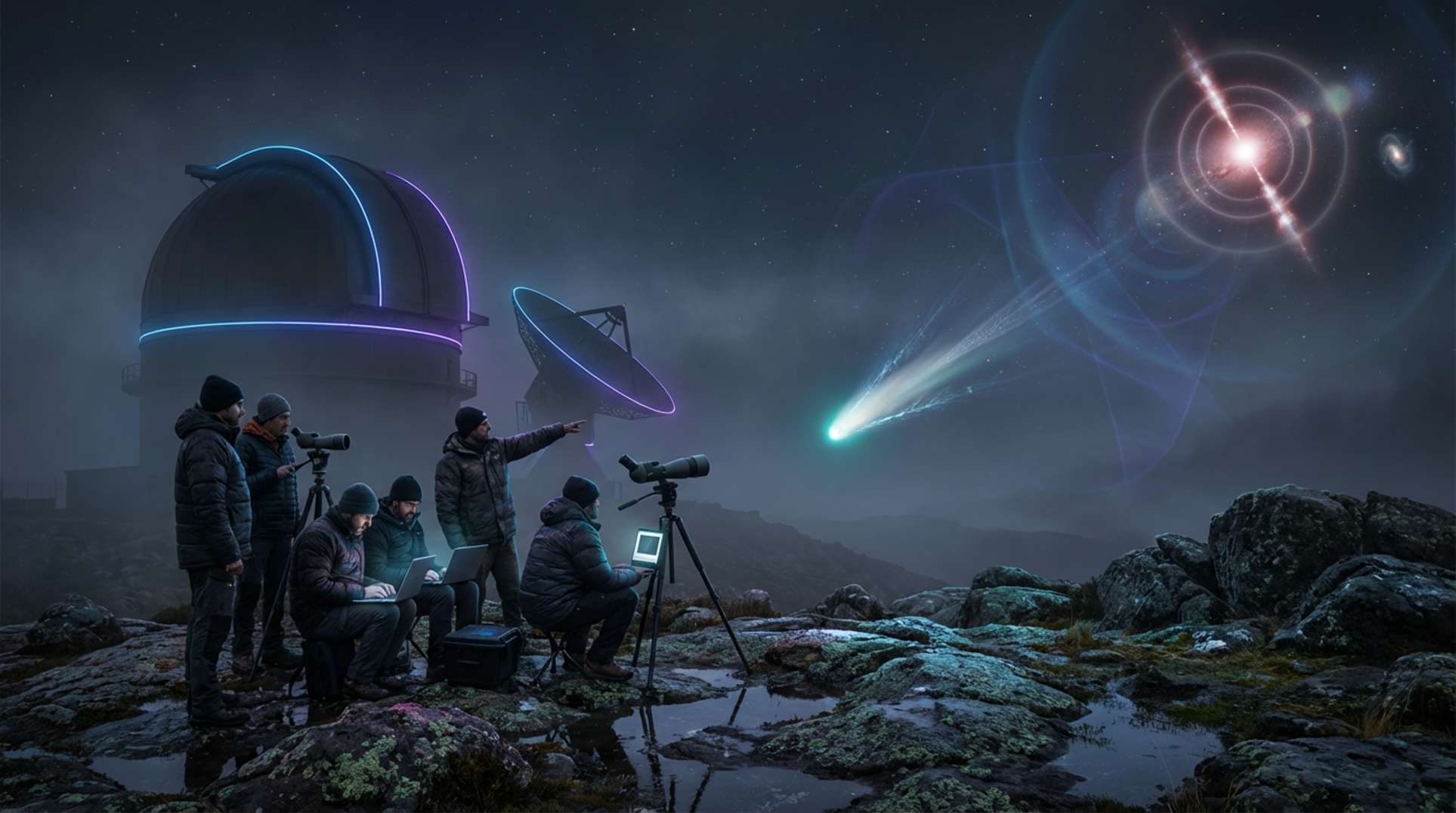Throughout history, governments have been involved in secret operations that raise eyebrows and spark curiosity. Many of these cover-ups reveal shocking truths about power, manipulation, and the lengths to which authorities will go to protect their interests. This article looks at ten significant government cover-ups that you might not know about, shedding light on the hidden stories behind them.
Key Takeaways
- Operation Paperclip brought former Nazi scientists to the U.S. after World War II, raising ethical questions.
- MKUltra was a secret CIA project that tested mind control techniques on unwitting subjects.
- The Gulf of Tonkin Incident was used to justify increased military action in Vietnam, but evidence suggests it was exaggerated.
- The Iran-Contra Affair involved illegal arms sales to Iran to fund Nicaraguan rebels, highlighting complex political maneuvers.
- The Tuskegee Syphilis Study allowed researchers to observe untreated syphilis in African American men without their consent.
1. Operation Paperclip

After World War II, the U.S. government started Operation Paperclip, a secret program that brought over 1,500 German scientists, engineers, and technicians to America. The goal was to use their skills to help advance U.S. technology, especially in rocket science and other important fields. This program was crucial for the U.S. during the Cold War, as it aimed to gain an edge over the Soviet Union.
Key Points:
- Nazi Scientists: Many of the scientists had worked for the Nazi regime, which raised ethical questions about their past.
- False Biographies: To hide their Nazi ties, the U.S. created fake biographies for some scientists, allowing them to work in America without scrutiny.
- Wernher von Braun: One of the most notable figures brought over was Wernher von Braun, who played a key role in developing the U.S. space program.
The ethical implications of Operation Paperclip were controversial, as it involved overlooking the past actions of individuals who had contributed to the Nazi war effort.
Impact:
The program significantly boosted American scientific capabilities, especially in the space race against the Soviet Union. However, it also raised moral questions about how far a nation should go to achieve technological superiority.
In summary, Operation Paperclip is a striking example of how the U.S. government prioritized scientific advancement over ethical considerations, leading to a complex legacy that still sparks debate today.
2. MKUltra
MKUltra was a secret CIA program that started in the 1950s. Its main goal was to explore mind control and how to manipulate human behavior. The CIA conducted experiments on people without their knowledge, using drugs like LSD and other methods. Here are some key points about MKUltra:
Key Points:
- Unwitting Subjects: Many participants were unaware they were part of the experiments.
- Methods Used: Techniques included hypnosis, sensory deprivation, and even torture.
- Lack of Oversight: Many studies were conducted without proper medical or scientific supervision.
The MKUltra project shows how far the government was willing to go in the name of national security. It raises serious questions about ethics and human rights.
Notable Outcomes:
| Year | Event |
|---|---|
| 1973 | CIA Director Richard Helms ordered the destruction of MKUltra documents. |
| 1974 | Investigations began, revealing the extent of the program. |
| 2000s | Public outrage led to calls for accountability and transparency. |
Conclusion:
MKUltra is a chilling example of government overreach. It reminds us to question the actions of those in power and to protect individual rights. The legacy of MKUltra continues to influence discussions about ethics in research and government transparency.
Highlights: MKUltra is often cited as a key example of unethical government actions, revealing shocking secrets and hidden agendas.
3. The Gulf of Tonkin Incident
The Gulf of Tonkin Incident is a significant event in American history that led to the escalation of the Vietnam War. Many believe that parts of this incident were fabricated. On August 2 and August 4, 1964, the USS Maddox was involved in reported confrontations with North Vietnamese boats. However, the truth about what really happened was hidden for many years.
Key Points:
- The first incident on August 2 involved the USS Maddox engaging three North Vietnamese boats.
- The second incident on August 4 was later revealed to be based on false radar images.
- In 2005, the National Security Agency declassified documents admitting that the second incident never occurred.
Timeline of Events:
| Date | Event Description |
|---|---|
| August 2 | USS Maddox engages North Vietnamese boats. |
| August 4 | Reported second attack, later deemed false. |
| 2005 | NSA admits the second incident did not happen. |
The Gulf of Tonkin Incident shows how misinformation can lead to major military actions. It raises questions about the integrity of government communications and decisions.
4. The Iran-Contra Affair
In the 1980s, the Iran-Contra Affair was a major political scandal in the United States. It involved secret actions by the Reagan administration that broke laws and raised many questions. The scandal began when the U.S. government sold weapons to Iran, which was under an arms embargo. The money from these sales was then used to support the Contras, a group fighting against the Sandinista government in Nicaragua.
Key Events:
- Arms Sales: In 1985, senior officials, including Oliver North from the National Security Council, facilitated the sale of arms to Iran.
- Funding the Contras: The profits from these sales were funneled to the Contras, despite Congress prohibiting such support.
- Hostage Situation: The arms sales were partly aimed at securing the release of American hostages held in Lebanon.
Consequences:
- The scandal was revealed in 1986, leading to widespread public outrage.
- Congressional hearings were held, lasting 41 days, to investigate the actions of the Reagan administration.
- Although some officials faced charges, the administration never labeled the arms sales as criminal.
The Iran-Contra Affair serves as a reminder of how government actions can sometimes operate outside the law, raising ethical questions about accountability and transparency.
5. The Tuskegee Syphilis Study

The Tuskegee Syphilis Study was a shocking example of unethical medical research. Conducted by the U.S. Public Health Service from 1932 to 1972, it involved 600 African American men, 399 of whom had syphilis. The men were misled into believing they were receiving treatment for their condition, but in reality, they were not given proper care, even after penicillin became the standard treatment.
Key Facts:
- Duration: The study lasted for 40 years, much longer than initially planned.
- Participants: 600 men were involved, with 399 having syphilis and 201 not infected.
- Outcome: The study ended only after public outrage in 1972, leading to a class-action lawsuit and a settlement of $10 million in 1974.
Ethical Violations:
- Informed Consent: Participants were not informed about the true nature of the study.
- Lack of Treatment: Even when effective treatment was available, it was withheld.
- Exploitation: The study exploited a vulnerable population, raising serious ethical concerns.
The Tuskegee Syphilis Study serves as a grim reminder of the need for ethical standards in medical research. It highlights the importance of informed consent and the protection of vulnerable groups in research settings.
This study not only caused harm to its participants but also eroded trust in medical institutions, particularly among African Americans. The legacy of the Tuskegee Syphilis Study continues to influence discussions about ethics in medical research today.
6. The Philadelphia Experiment
The Philadelphia Experiment is a famous story that claims the U.S. Navy conducted a secret project during World War II. This project supposedly aimed to make a warship invisible. The USS Eldridge was the ship involved in this experiment, and during the first test, it allegedly vanished from sight.
Key Points:
- Cloaking Device: The goal was to create a device that could hide ships from enemy radar.
- Mysterious Disappearance: Witnesses reported that the USS Eldridge disappeared and then reappeared suddenly.
- Government Denial: The Navy has always denied that such an experiment took place, calling it a hoax.
Public Reaction:
Many people were fascinated by the idea of a cloaking device. The story has inspired numerous books, movies, and conspiracy theories. Some believe that the government is still hiding the truth about this experiment.
The Philadelphia Experiment remains a captivating tale that raises questions about what the government might be hiding.
Summary Table:
| Aspect | Details |
|---|---|
| Project Name | Philadelphia Experiment |
| Year | 1943 |
| Ship Involved | USS Eldridge |
| Alleged Outcome | Ship became invisible |
| Government Response | Denial of existence |
7. The Roswell Incident
In July 1947, something mysterious happened in Roswell, New Mexico. A rancher named Mac Brazel discovered strange debris on his land. Initially, the military claimed it was a flying saucer, but later they said it was just a weather balloon. This change in story led to many conspiracy theories about what really happened.
Key Points:
- Initial Claim: The military first said it was a flying disc.
- Revised Statement: They later stated it was a weather balloon.
- Public Reaction: This sparked endless theories about UFOs and government cover-ups.
The Roswell incident is often seen as a turning point in public perception of UFOs.
Timeline of Events:
| Date | Event Description |
|---|---|
| July 1947 | Rancher finds debris on his property. |
| July 8, 1947 | Military issues a press release about a flying disc. |
| July 9, 1947 | Military retracts statement, claims it was a weather balloon. |
Why It Matters:
- The Roswell incident remains one of the most famous UFO events in history.
- It has led to ongoing speculation about government secrecy regarding extraterrestrial life.
- Many believe that the truth about what really happened is still hidden.
8. Area 51
Area 51 is a secretive military base located in Nevada, often surrounded by mystery and speculation. This facility is primarily used for testing advanced aircraft and other technologies. Here are some key points about Area 51:
- Location: Situated at Groom Lake in southern Nevada.
- Purpose: Mainly for testing experimental aircraft and conducting classified military operations.
- Public Perception: Many believe it is a site for alien technology and UFOs, leading to numerous conspiracy theories.
Notable Facts about Area 51
| Fact | Description |
|---|---|
| Established | 1955 |
| First Aircraft Tested | U-2 Spy Plane |
| Declassified Information | Limited details released in 2013 |
The secrecy surrounding Area 51 has fueled public curiosity and numerous conspiracy theories, making it a focal point for UFO enthusiasts and skeptics alike.
9. The Manhattan Project
The Manhattan Project was a secret U.S. government program during World War II that developed the first atomic bombs. This project was crucial in changing the course of the war and the future of warfare itself.
Key Facts:
- Started: 1942
- Ended: 1945
- Main Locations: Los Alamos, New Mexico; Oak Ridge, Tennessee; Hanford, Washington
Major Events:
- Trinity Test: The first successful test of an atomic bomb occurred on July 16, 1945, in New Mexico.
- Hiroshima and Nagasaki: The bombs were dropped on these Japanese cities in August 1945, leading to Japan’s surrender.
- Secrecy: The project was highly classified, with many workers unaware of the true purpose of their work.
The Manhattan Project not only changed the nature of warfare but also raised ethical questions about the use of nuclear weapons.
Impact:
- Nuclear Age: It marked the beginning of the nuclear age, influencing global politics and military strategies.
- Scientific Advancements: The project led to significant advancements in physics and engineering.
- Public Awareness: It sparked debates about nuclear energy and weapons, leading to movements for disarmament and peace.
The Manhattan Project remains a pivotal moment in history, illustrating the lengths to which governments will go in times of war and the profound consequences of their actions.
10. The COINTELPRO Program
COINTELPRO, short for Counter Intelligence Program, was a series of covert operations conducted by the FBI from the 1950s to the 1970s. This program aimed to surveil, infiltrate, and disrupt domestic political organizations deemed subversive.
Key Objectives of COINTELPRO
- Disrupt civil rights organizations, feminist groups, and other activist movements.
- Surveil individuals and groups to gather intelligence.
- Infiltrate organizations to create distrust among members.
Notable Tactics Used
- Fake letters: The FBI sent misleading letters to create conflict within groups.
- Infiltration: Agents posed as members to gather information and influence decisions.
- Harassment: Activists faced intimidation through surveillance and threats.
The COINTELPRO program highlights the lengths to which the government will go to suppress dissent and maintain control over political movements.
Impact of COINTELPRO
The program had a lasting impact on civil rights movements, leading to distrust among activists and a chilling effect on free speech. Many organizations were severely weakened, and some leaders faced significant personal consequences.
| Year | Event | Outcome |
|---|---|---|
| 1960 | Targeting of Martin Luther King Jr. | Increased surveillance and harassment |
| 1969 | Disruption of the Black Panther Party | Significant decline in membership and influence |
| 1971 | Public exposure of COINTELPRO | Outrage and calls for accountability |
The COINTELPRO program was a secret initiative by the FBI aimed at spying on and disrupting civil rights groups and other organizations. This program raised serious questions about government actions and civil liberties. If you want to learn more about this fascinating topic and explore other intriguing insights, visit our website today!
Final Thoughts on Government Cover-Ups
In conclusion, the world of government cover-ups is filled with secrets that can change how we see history. From hidden UFO files to secret projects, these stories remind us that not everything is as it seems. While some may think these tales are just wild theories, many have been proven true over time. It’s important for us to stay curious and question what we hear. By doing so, we can uncover the truth and hold those in power accountable. The more we learn, the better we can understand the world around us.
Frequently Asked Questions
What is Operation Paperclip?
Operation Paperclip was a secret program where the U.S. government brought German scientists to America after World War II. They wanted to use their knowledge for military and space projects.
What was MKUltra?
MKUltra was a CIA project that tested mind control techniques on people without their knowledge. It included experiments with drugs like LSD.
What happened during the Gulf of Tonkin Incident?
The Gulf of Tonkin Incident involved two attacks on U.S. ships by North Vietnamese forces in 1964. This event led to increased U.S. involvement in the Vietnam War.
What was the Iran-Contra Affair?
The Iran-Contra Affair was a scandal in the 1980s where the U.S. secretly sold weapons to Iran and used the money to support rebels in Nicaragua.
What was the Tuskegee Syphilis Study?
The Tuskegee Syphilis Study was an unethical experiment that lasted from 1932 to 1972. It studied untreated syphilis in African American men without their consent.
What is the Philadelphia Experiment?
The Philadelphia Experiment is a rumored naval military experiment from 1943 that allegedly made a ship invisible. Many believe it involved time travel.




